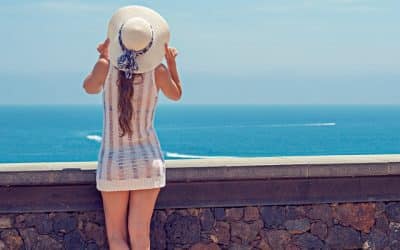It starts with a toe in the sand. Then it’s a short stroll across warm flagstones. Before long, you’re ordering a smoothie in a beach café with absolutely nothing between your feet and the earth. Going barefoot in Costa Rica isn’t just acceptable—it’s a badge of honour. In a country where nature rules and stress evaporates in the humidity, ditching your shoes is more than comfort; it’s a quiet rebellion against the fast-paced world and an embrace of Pura Vida at ground level.

Why do so many people go barefoot in Costa Rica?
Many locals and expats go barefoot because it’s comfortable, practical, and deeply connected to the relaxed Costa Rican lifestyle.
Shoes quickly become optional when:
- The climate is warm year-round
There’s little need to insulate your feet when the ground never freezes and the air feels like a hug. - Surfaces are soft and natural
From volcanic sand to smooth jungle soil and grassy patios, the terrain invites barefoot wandering. - There’s cultural flexibility
In many areas, especially coastal or rural ones, no one bats an eye if you’re barefoot in shops or restaurants. - It fosters a sense of freedom
Walking barefoot taps into something primal—an unspoken joy of connection and simplicity.
What are the benefits of walking barefoot?
Walking barefoot strengthens feet, improves posture, and helps ground you mentally and emotionally.
This habit—sometimes called “earthing”—offers a range of physical and mental benefits:
- Improved foot strength and mobility
Without shoes, the muscles in your feet and calves work more naturally and actively. - Better balance and posture
Barefoot walking can help align your spine and reduce strain on knees and hips. - Stress reduction
Connecting with the earth, literally, has been shown to lower cortisol and boost mood. - Natural exfoliation
Beach walks smooth your soles better than any salon.
Is going barefoot safe in Costa Rica?
For the most part, yes—but it’s smart to stay alert and choose your barefoot moments wisely.
Barefoot living works best when:
- You’re familiar with the area
Stick to known beaches, gardens, and patios to avoid stepping on hazards. - You carry sandals just in case
A pair of flip-flops in your bag covers you for town visits, rocky trails, or questionable pavements. - You keep your feet clean
Rinse regularly to avoid infections, especially in tropical humidity. - You listen to your body
If the surface is too hot, sharp, or uncomfortable, your feet will let you know.
Why is barefoot living such a big part of Costa Rica’s culture?
Barefoot living in Costa Rica reflects the country’s laid-back values and its deep relationship with nature.
Costa Rica celebrates simplicity, and the no-shoes norm is a perfect fit for:
- Beach communities
Flip-flops are formalwear in towns like Tamarindo and Puerto Viejo, where board shorts and bikinis double as dinner attire. - Eco-minded living
Going barefoot reduces consumerism and waste—no fast fashion required. - A slower pace of life
No one’s rushing anywhere, and you certainly don’t need to run for a train in Nosara. - Kids growing up outdoors
Children play barefoot in yards and on jungle paths—scrapes and all.
FAQs
Is it socially acceptable to go barefoot in public in Costa Rica?
Yes, especially in beach towns, rural communities, and relaxed cafés. In cities or upscale places, shoes are still expected.
Can I hike barefoot in Costa Rica?
Stick to light nature walks barefoot. For dense jungle or volcanic trails, proper footwear is a must for safety.
Will restaurants or shops let me in barefoot?
Many casual places will. But for anything fancy or indoors, have sandals on hand.
Is walking barefoot healthy or harmful?
When done mindfully, it’s generally beneficial. But always watch for hazards and clean your feet regularly.
What do locals think about barefoot tourists?
If you’re respectful and clean, you’ll fit right in. Just don’t act surprised if everyone else is barefoot too.






